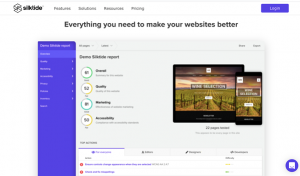— December 13, 2017
How do you know your marketing campaigns are driving sales and customer engagement? Furthermore, how do you know which ones are doing the driving? Marketers understand the objective of their campaigns is to generate leads for sales; but, as we move into a more tech-heavy environment, marketers can’t just rely on innovative campaigns and branding to evaluate their performance. While you may already know who engaged with a campaign and what they did with it (clicked on it, how long they engaged with it), UTM codes are a simple way to find out the where, how, and why behind customer interactions.
Back to the Basics
UTM stands for “Urchin Tracking Module”. UTM codes are a small set of text you can tag onto the end of a URL to track information that goes to straight to your analytics program.
Two main components make up UTM codes, parameters and tracking variables. Each parameter contains specific information or variables about each metric.

Breaking It Down
Note that the first three parameters (source, medium, and campaign) are required for tracking, and the last two are optional.
- utm_source – this is the originating source the engagement comes from (i.e. twitter, newsletter, google, etc.) It answers the question, “Where are my engagements coming from?”
- Example: utm_source=twitter
- utm_medium – this is the method people use to find the link (i.e. email, social media, referral); Here we’re answering, “How did the engagement get here?”.
- Example: utm_medium=socialmedia
- utm_campaign – this is an identifier that groups campaigns together in your analytics (sale, product launch, event); Look at this as “why the traffic is coming to you” or “this traffic stems from this effort”.
- Example: utm_campaign=weeklyblog
- utm_term – recommended for paid searches, this parameter allows you to associate keywords or terms with the link; note that Google AdWords automatically tags keywords if your AdWords and Analytics accounts are connected and you use the auto-tagging feature
- Example: utm_term=utm+tracking
- (utm_term uses “+” signs to separate multiple keywords)
- utm_content – this provides additional signifying details about the individual link (the title, or specific characteristics that differentiate it)
- Example: utm_content=utmexample
Keep in Mind
Just remember, the most important thing about UTM parameters is setting them up front and staying consistent with them. The parameter utm_source=twitter is different from utm_source=twitter.com and utm_source=Twitter. Using confused or discontinuous parameters muddles your data.
Additionally, use link shorteners like bit.ly so that URLs remain easy to use and shareable. No one likes an unreadable messy hyperlink.
So why go to the trouble of adding UTM codes to your marketing campaigns? Right now, if you aren’t using UTM codes, you’re probably only seeing aggregate response data such as clicks or impressions on campaigns. UTM codes take it further. By adding a short string of text to a marketing campaign links, you can organize your analytics by campaign, identify and track individual engagements, and monitor your online traffic in one fell swoop.
Using UTM Codes Effectively
Now you know what UTM codes are. But, how do you use them? In order to collect usable data over time, you must make sure that each parameter is defined clearly and everyone knows what they stand for. Without constant communication, the parameters get cluttered with ambiguous data.
Most Marketing Automation Programs have the ability to carry over your UTM codes, such as Marketo and Hubspot. Here’s a nifty guide on how to set up UTM capabilities in Hubspot’s system. Doing this allows you to integrate your new data with your current system. The addition is almost seamless. Plus, you oftentimes get deliverables in graphs and charts that make the results easy to transfer to presentations.
Organizing your UTM codes gives you the power to see which individual campaigns are driving traffic to your website. Instead of just seeing general Facebook or Email referrals, you can see which exact post brought them to you. Then you can connect that originating post to where a customer goes on the website, beyond the linked content. UTM codes reveal valuable information on your marketing endeavors and can sway your marketing allocations for the future.
Conclusion
The key to using UTM codes properly lies in consistency, organization, and carry over to your current MAP. We’ve adapted a tracker, so you can easily track your UTM parameters over time.
Digital & Social Articles on Business 2 Community
(78)
Report Post





